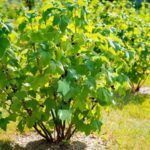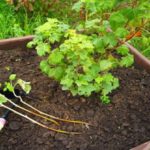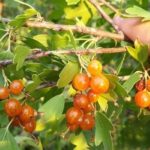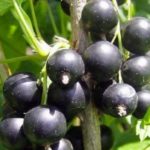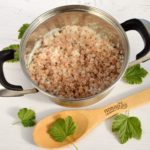As a rule, during the season, the main dacha work is aimed at creating optimal conditions for the growth and development of useful cultivated plants. But you also need to pay attention to preserving the quality of the berry harvest. Many summer residents are concerned about why ripe blackcurrant berries crack and how to prevent this phenomenon. When solving the problem, it is important to take into account the type and structure of the soil, the topography of the site, and the climatic nuances of the region.
Main reasons
Black currant is considered an unpretentious crop, the cultivation of which does not cause much trouble.The plant is a moisture-loving plant, but when watering it is important to follow some rules.
Frequent irrigation of the soil is carried out before filling the berries. If the irrigation regime is not changed, the bushes gain excess moisture, and the ripening currants begin to burst.
We also cannot rule out the vagaries of the weather. If, after heavy watering or prolonged rain, it suddenly gets cold, moisture stops evaporating and soil moisture increases. Stagnation of liquid can cause cracking of the berries.
What to do if blackcurrant berries crack
It is necessary to restore the watering regime. In this case, the region where currants are grown is taken into account. In the southern regions, the soil is irrigated once a week. In the northern regions, more frequent watering of the soil is carried out before the berries ripen (in the flowering and ovary formation phases). And during periods of berry filling and harvesting, watering the bushes is reduced.
It is advisable to plant currant bushes on sloping areas. In this case, excess water during irrigation and rain moisture will drain naturally, eliminating excessive moisture in the soil under the bushes. In areas located in lowlands, small mounds can be formed on which crops are planted.
Prevention measures
To prevent cracking of black currant berries, you need to prevent stagnation of moisture in the soil. Main events:
- It is advisable to equip a surface drainage system in areas located in lowlands. Collected melt, rain, and flood water is discharged into the storm drain. Or, in an area planted with currant bushes, special channels are dug to collect and drain excess moisture;
- Stagnation of moisture may be due to too heavy soil (clayey). In this case, the easiest way is to change the structure of the soil.To make the water drain faster, clay soils are mixed with sand;
- Regular loosening of the soil can be considered as a preventive measure. Thanks to this, moisture will evaporate faster and seep deep into the soil;
- mulched beds prevent the soil from drying out quickly. Thanks to a layer of straw 10-16 cm thick, it will be possible to water the currant bushes once a month. In this case, you will not have to worry about sudden waterlogging of the soil in the event of a sudden long rain;
- Moisture-loving plants (irises, rhododendrons, ferns) planted next to currants will help regulate soil moisture.
In order for blackcurrant bushes to grow on drier soil, you can plant them on an artificially elevated area. The relief is changed in such a way that rain and melt water flows naturally towards the drainage system.







